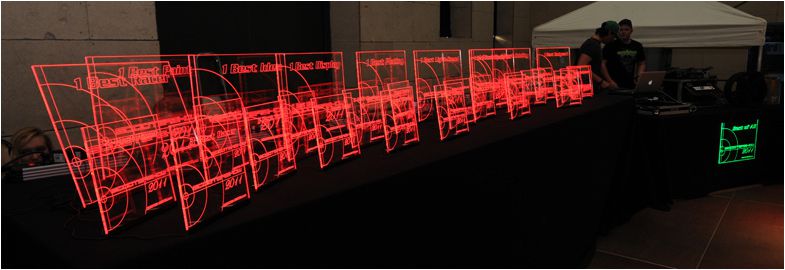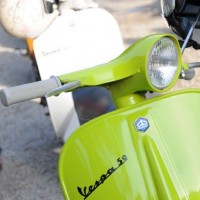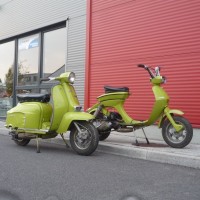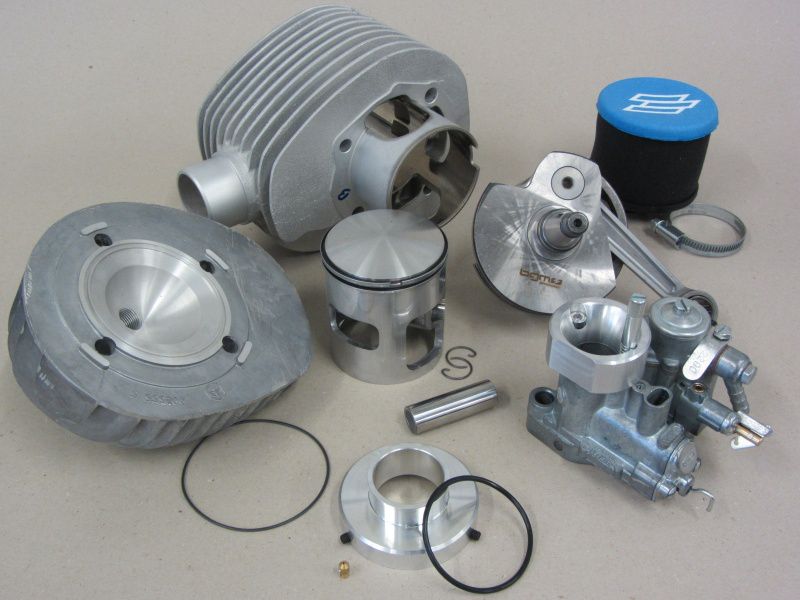Nur noch wenige Schritte trennen uns davon den Motor in ein Testfahrzeug einzuhängen.
Als Testopfer für unseren Polini-Motor, greifen wir auf die bekannte Silver Fern zurück.
Bei der Polrad Montage darauf achten, dass man mit der Nut den Halbmondkeil genau trifft.
Anschließend wird die Polradmutter mit 65Nm angezogen. Unterlegscheibe nicht vergessen !
Die hintere Bremstrommel wird zunächst nur aufgesteckt und mit der Mutter fixiert.
Sobald die Hinterradbremse funktionstüchtig ist, kann die Bremstrommel mit 110Nm befestigt werden. Sicherungskäfig und Splint dürfen natürlich nicht fehlen.
Die Bedienelemente vom Lenker verbinden wir noch mit dem Motor, sprich Gas-, Schalt- und Kupplungszug werden befestigt und eingestellt.
Das Sicherheitsspiel am Kupplungshebel sollte zwischen 1,5mm und 2mm betragen, um zu vermeiden das bei Schaltvorgängen in höhere Gänge der Kupplungszug betätigt wird und somit der Druckpilz auf die Andruckplatte wirkt und die Kupplung eventuell sogar betätigt.
Öl und Benzinschlauch folgen. Die Luftblase im Ölschlauch ist gewollt. Beim ersten Anschliessen kann man so kontrollieren ob das Öl von der Pumpe in den Vergaser befördert wird.
Grösser als hier gezeigt sollte die Luftblase allerdings nicht sein, sonst besteht die Gefahr, dass die Pumpe leer läuft und kein Öl mehr in Richtung Vergaser transportiert wird.
Für das „first firing“ füllen wir 1Liter Super in einer Mischung von 1:50 in den Tank. Diese Treibstoffmenge sollte ausreichen um den Zeitrum zu überbrücken, bis die Ölpumpe den wertvollen Schmiersaft fördert.
Letze fehlenden Teile sind die Lüfterradabdeckung und die Zylinderhaube.
Dann heisst es Feuer Frei!
Nach ein paar Minuten warm laufen, schalten wir zunächst alle Gänge einmal durch und testen ob alle Gänge halten und die Kupplung sauber trennt.
Ein kurzer Blick auf den Öl-Schlauch verrät – Pumpe: läuft.
Also dann, erster Versuch auf dem Prüfstand mit folgendem Setup:
-Polini 210, Auslass, Kolben und Überstromkanäle sind nicht bearbeitet, Spacer Zylinderfuß 1mm.
–SI 26, Cosa Schwimmerkammerdeckel mit Zusatzbohrung, Düsenstock ebenfalls mit Zusatzbohrung
-Bedüsung 48/160 – 160–BE3-ein Set Hauptdüsen zum herumspielen
-Einlassbereich von den störenden Kanten befreit, die Dichtungen entsprechend der neuen Kontur angepasst. Polini Ansaugtrichter mit Adapter und Polini Luftfilter.
Zur Sicherheit kontrollieren wir die Zündeinstellung per Umschlagsmessung. Wenn die Toleranzen an Kurbelwelle, Polrad und Grundplatte stimmen, sollte beim Anblitzen die Markierungen übereinander stehen. Dieses mal haben wir die 18° Markierung auf dem Polrad vorgenommen.
Ok, Zündung stimmt – dann steht dem ersten Testlauf nichts mehr im Weg…



































































